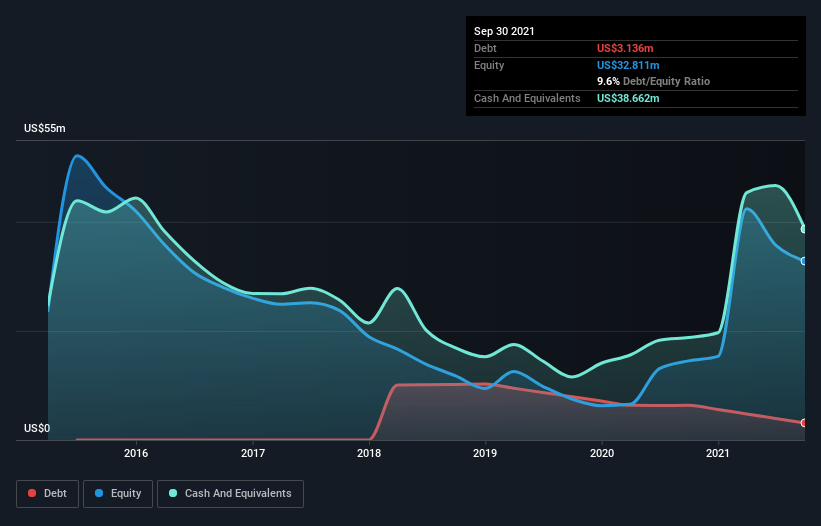Lipocine (NASDAQ:LPCN) Has Debt But No Earnings; Should You Worry?
David Iben put it well when he said, 'Volatility is not a risk we care about. What we care about is avoiding the permanent loss of capital.' It's only natural to consider a company's balance sheet when you examine how risky it is, since debt is often involved when a business collapses. We note that Lipocine Inc. (NASDAQ:LPCN) does have debt on its balance sheet. But should shareholders be worried about its use of debt?
What Risk Does Debt Bring?
Debt and other liabilities become risky for a business when it cannot easily fulfill those obligations, either with free cash flow or by raising capital at an attractive price. Ultimately, if the company can't fulfill its legal obligations to repay debt, shareholders could walk away with nothing. While that is not too common, we often do see indebted companies permanently diluting shareholders because lenders force them to raise capital at a distressed price. Of course, the upside of debt is that it often represents cheap capital, especially when it replaces dilution in a company with the ability to reinvest at high rates of return. The first thing to do when considering how much debt a business uses is to look at its cash and debt together.
See our latest analysis for Lipocine
How Much Debt Does Lipocine Carry?
You can click the graphic below for the historical numbers, but it shows that Lipocine had US$3.14m of debt in September 2021, down from US$6.36m, one year before. But on the other hand it also has US$38.7m in cash, leading to a US$35.5m net cash position.
How Healthy Is Lipocine's Balance Sheet?
Zooming in on the latest balance sheet data, we can see that Lipocine had liabilities of US$6.43m due within 12 months and liabilities of US$1.15m due beyond that. On the other hand, it had cash of US$38.7m and US$159.2k worth of receivables due within a year. So it actually has US$31.2m more liquid assets than total liabilities.
It's good to see that Lipocine has plenty of liquidity on its balance sheet, suggesting conservative management of liabilities. Given it has easily adequate short term liquidity, we don't think it will have any issues with its lenders. Simply put, the fact that Lipocine has more cash than debt is arguably a good indication that it can manage its debt safely. There's no doubt that we learn most about debt from the balance sheet. But it is future earnings, more than anything, that will determine Lipocine's ability to maintain a healthy balance sheet going forward. So if you're focused on the future you can check out this free report showing analyst profit forecasts.
It seems likely shareholders hope that Lipocine can significantly advance the business plan before too long, because it doesn't have any significant revenue at the moment.
So How Risky Is Lipocine?
Statistically speaking companies that lose money are riskier than those that make money. And we do note that Lipocine had an earnings before interest and tax (EBIT) loss, over the last year. And over the same period it saw negative free cash outflow of US$17m and booked a US$18m accounting loss. But at least it has US$35.5m on the balance sheet to spend on growth, near-term. Overall, its balance sheet doesn't seem overly risky, at the moment, but we're always cautious until we see the positive free cash flow. When analysing debt levels, the balance sheet is the obvious place to start. But ultimately, every company can contain risks that exist outside of the balance sheet. For example, we've discovered 3 warning signs for Lipocine (1 is a bit unpleasant!) that you should be aware of before investing here.
If you're interested in investing in businesses that can grow profits without the burden of debt, then check out this free list of growing businesses that have net cash on the balance sheet.
Have feedback on this article? Concerned about the content? Get in touch with us directly. Alternatively, email editorial-team (at) simplywallst.com.
This article by Simply Wall St is general in nature. We provide commentary based on historical data and analyst forecasts only using an unbiased methodology and our articles are not intended to be financial advice. It does not constitute a recommendation to buy or sell any stock, and does not take account of your objectives, or your financial situation. We aim to bring you long-term focused analysis driven by fundamental data. Note that our analysis may not factor in the latest price-sensitive company announcements or qualitative material. Simply Wall St has no position in any stocks mentioned.

 Yahoo Finance
Yahoo Finance 
